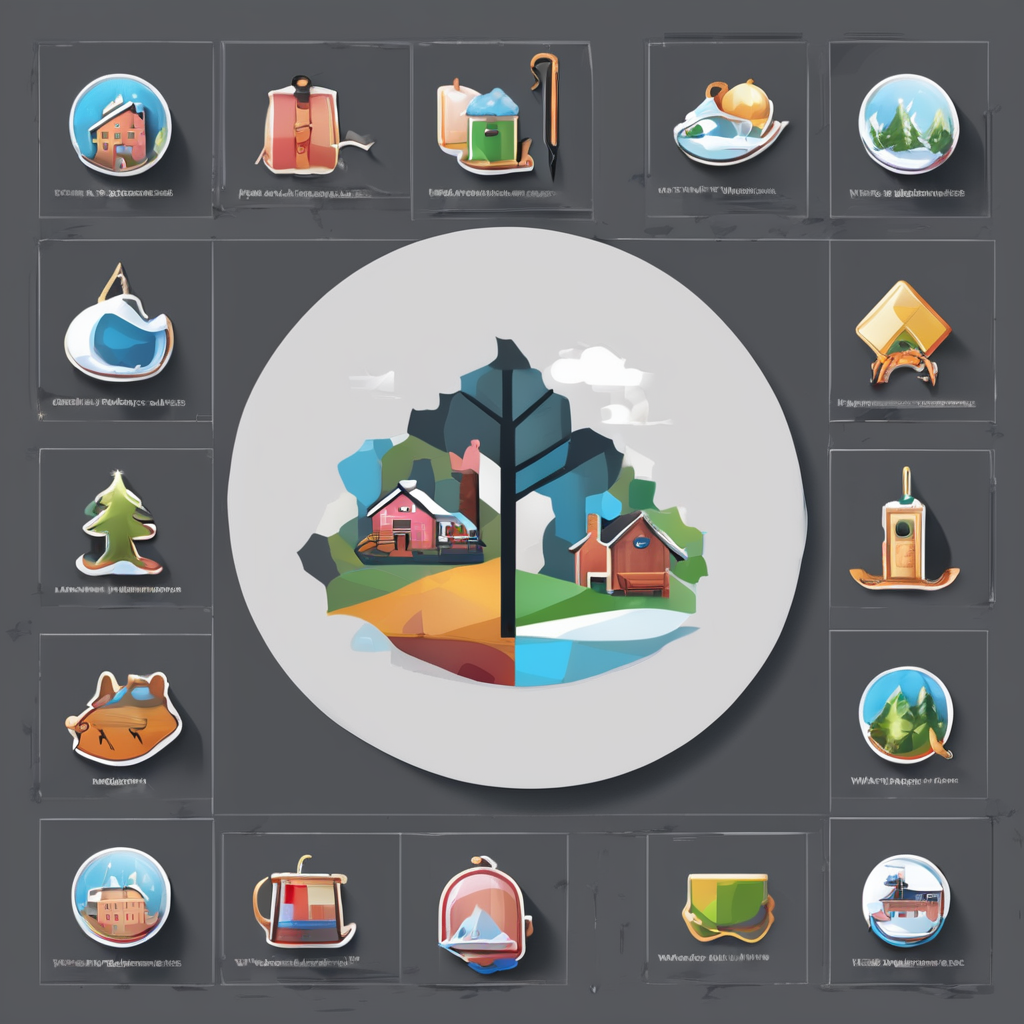Multi-Sensory Playroom Foundations for UK Homes
Creating a multi-sensory playroom design in UK homes requires careful consideration of space and sensory input. These environments nurture children’s development by engaging multiple senses, including sight, touch, sound, and movement. Sensory spaces for kids support cognitive growth, motor skills, and emotional regulation, making them vital in playroom planning.
Core elements in such playrooms include vibrant yet soothing colour schemes, varied texture options, calming and stimulating sounds, gentle movement aids like swings or rocking chairs, and adaptable lighting. Each element serves to stimulate different sensory pathways while maintaining balance to avoid overstimulation.
In UK homes, room size often limits playroom dimensions, so utilizing vertical space and multifunctional features enhances usability. Compact yet versatile layouts allow for distinct play zones within smaller footprints. Choosing lightweight, portable sensory items also helps adapt to changing needs. Understanding these fundamentals ensures the design supports sensory integration and creates a welcoming, functional area specifically tailored to typical UK home constraints.
Essential Sensory Zones: Layouts and Inspiration
Choosing the right playroom layout ideas is crucial for maximizing space and function in a UK home playroom. Effective sensory room zones create dedicated areas that cater to different activities and sensory needs. For example, a quiet corner with soft cushions and calming lights supports relaxation and focus. An active zone might include swings or mats for movement, encouraging physical play and coordination.
Have you seen this : Revamp overlooked closets into motivational workspaces: creative uk home office design solutions
Creating a reading nook helps foster quiet learning and imagination, while a creative space with art supplies and tactile objects stimulates fine motor skills and artistic expression. In small UK rooms, flexible furniture like foldaway tables and stackable seating ensures zones adapt as children grow and their preferences evolve.
Simple, versatile arrangements can transform a compact playroom into distinct yet connected spaces. Using rugs or shelving units to delineate sensory zones guides children intuitively without enclosure. Parents can also rotate sensory toys and features between zones to keep engagement high and accommodate varying daily moods or developmental stages.
By applying thoughtful playroom layout ideas and flexible zoning, families can establish engaging play spaces that support children’s sensory development effectively within typical UK home sizes.
Multi-Sensory Playroom Foundations for UK Homes
Designing a multi-sensory playroom in a UK home involves blending essential sensory elements to promote development while respecting space limitations common in UK residences. Key to this design is incorporating balanced colour, texture, sound, movement, and lighting—each stimulating different senses without overwhelming children.
Colour schemes should mix soothing tones with vibrant accents to capture attention yet maintain calm. Textures vary from soft cushions and rugs to tactile wall panels, offering tactile exploration that supports fine motor skill growth. Sound elements like gentle music or nature sounds help regulate emotions and improve focus, while movement aids such as swings or rocking seats encourage physical coordination and vestibular input.
Lighting in these spaces requires adaptability—dimmable fixtures or natural light sources reduce sensory overload and support circadian rhythms. Considering typical UK home layouts, vertical storage and multi-use furniture maximize limited floor space, allowing children to engage safely in diverse sensory activities.
In essence, effective multi-sensory playroom design in UK homes balances stimulating sensory input with careful spatial planning. This approach creates inviting sensory spaces for kids that nurture cognitive, physical, and emotional development while aligning with UK home constraints.
Multi-Sensory Playroom Foundations for UK Homes
Crafting a multi-sensory playroom design requires blending five core sensory elements: colour, texture, sound, movement, and adaptable lighting. Each serves a unique developmental role. For instance, carefully chosen colour palettes mix calming shades with dynamic accents that engage yet soothe young minds. Diverse texture options—soft cushions, tactile wall panels, and varied fabrics—encourage exploration and fine motor skills.
Soundscapes, such as gentle music or ambient nature sounds, regulate mood and enhance focus, addressing emotional needs effectively. Incorporating physical movement aids like swings or rocking seats supports vestibular development and coordination. Meanwhile, flexible lighting—particularly dimmable or natural light—helps modulate sensory input, avoiding overstimulation common in tightly packed spaces.
UK home playroom ideas must respect typical smaller room sizes. Using vertical storage and multi-purpose furniture optimizes space without sacrificing sensory richness. Portable sensory tools enable easy adaptation as children grow or their preferences change. Sensory spaces for kids in UK homes should prioritize safety alongside sensory engagement, selecting non-toxic, durable materials suited for compact areas.
Well-executed multi-sensory playroom design balances stimulation and calmness. This fosters development while accommodating the spatial realities of UK households.
Multi-Sensory Playroom Foundations for UK Homes
Designing a multi-sensory playroom means integrating key sensory elements that foster development while fitting UK home constraints. The foundation rests on blending colour, texture, sound, movement, and adaptable lighting into one cohesive environment. Each element targets specific sensory processing: colours motivate attention yet soothe emotions; textures invite tactile exploration supporting fine motor skills; sounds calm or energize, aiding concentration and emotional regulation.
Movement features such as swings or rocking chairs provide vestibular stimulation crucial for balance and coordination. Lighting should be adjustable to prevent overstimulation—dimmable fixtures or natural light can align with circadian rhythms, promoting comfort throughout the day. In typical UK homes, space is at a premium. This requires efficient use of vertical storage and furniture that serves multiple purposes without crowding, ensuring sensory spaces for kids remain open and inviting.
Selecting tools and materials also considers safety and flexibility. Lightweight, portable sensory items accommodate evolving play preferences, while non-toxic, durable fabrics guarantee safe interaction. Through deliberate design, UK home playroom ideas can maximize sensory benefits while respecting smaller rooms, delivering rich, developmentally supportive spaces tailored for children’s needs.
Multi-Sensory Playroom Foundations for UK Homes
Creating an effective multi-sensory playroom design hinges on blending five core elements: colour, texture, sound, movement, and lighting. Each contributes uniquely to a child’s sensory development within sensory spaces for kids. Colours should balance calming hues with lively tones to engage without overwhelming. Textures invite tactile exploration—think soft cushions, varied fabrics, and sensory panels—to develop fine motor skills and sensory integration.
Soundscapes, including gentle music or natural ambient sounds, support emotional regulation and focus. Movement aids such as swings, balance boards, or rocking seats provide vestibular stimulation essential for coordination and spatial awareness. Lighting must be versatile; dimmable or natural light reduces sensory overload and enhances mood.
UK homes often feature compact rooms, so smart spatial planning is vital. Incorporate vertical storage and multi-functional furniture to optimize limited space, ensuring the multi-sensory playroom design remains practical yet rich in stimuli. Portable sensory tools also add flexibility as children’s needs evolve. Prioritizing safety through non-toxic, durable materials ensures a secure environment, making these UK home playroom ideas achievable and beneficial.




